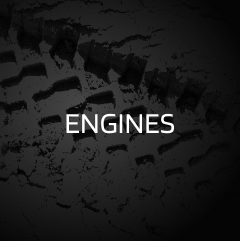 CCA Spares
CCA Spares
Understanding the Role of Pistons and Cylinders in an…
Engines are intricate systems composed of numerous components working in harmony to generate power. At the core of this mechanical symphony are two fundamental elements: the piston and the cylinder.
Piston:
The piston is a cylindrical component typically made of aluminum alloy that moves up and down inside a cylinder. Attached to the connecting rod, the piston’s primary function is to convert the pressure generated by the combustion of fuel into mechanical motion. As the fuel-air mixture ignites, the resulting high-pressure gases push the piston downward, creating the force that drives the engine.
Explore the journey of a piston, from its ascent during the intake and compression strokes to its power-producing descent during the power and exhaust strokes. Uncover the design intricacies that allow pistons to withstand extreme temperatures and pressures while maintaining a precise fit within the cylinder.
Cylinder:
Cylinders form the housing for pistons and are a critical component in the engine’s operation. Typically arranged in a row or a V-shape, cylinders play a vital role in guiding the piston’s movement. Dive into the engineering considerations behind cylinder design, including materials used, bore and stroke dimensions, and the overall impact on engine performance.
Examine the four-stroke combustion cycle within the cylinder – intake, compression, power, and exhaust – and understand how each phase contributes to the overall efficiency and power output of the engine. Delve into the significance of proper cylinder sealing and how technologies like cylinder liners enhance durability.
Harmony in Motion:
The synchronicity between pistons and cylinders is a dance of precision and engineering ingenuity. Uncover how factors like cylinder displacement, compression ratio, and the number of cylinders contribute to the engine’s overall performance. From inline configurations to the complexities of V-shaped engines, explore the diverse ways in which pistons and cylinders come together to generate power.
In conclusion, the partnership between pistons and cylinders forms the foundation of internal combustion engines. This article provides a comprehensive overview of their roles, exploring the intricacies that make them indispensable to the dynamic world of automotive power generation. Stay tuned for the next installment as we continue to unravel the mysteries of engine components.

